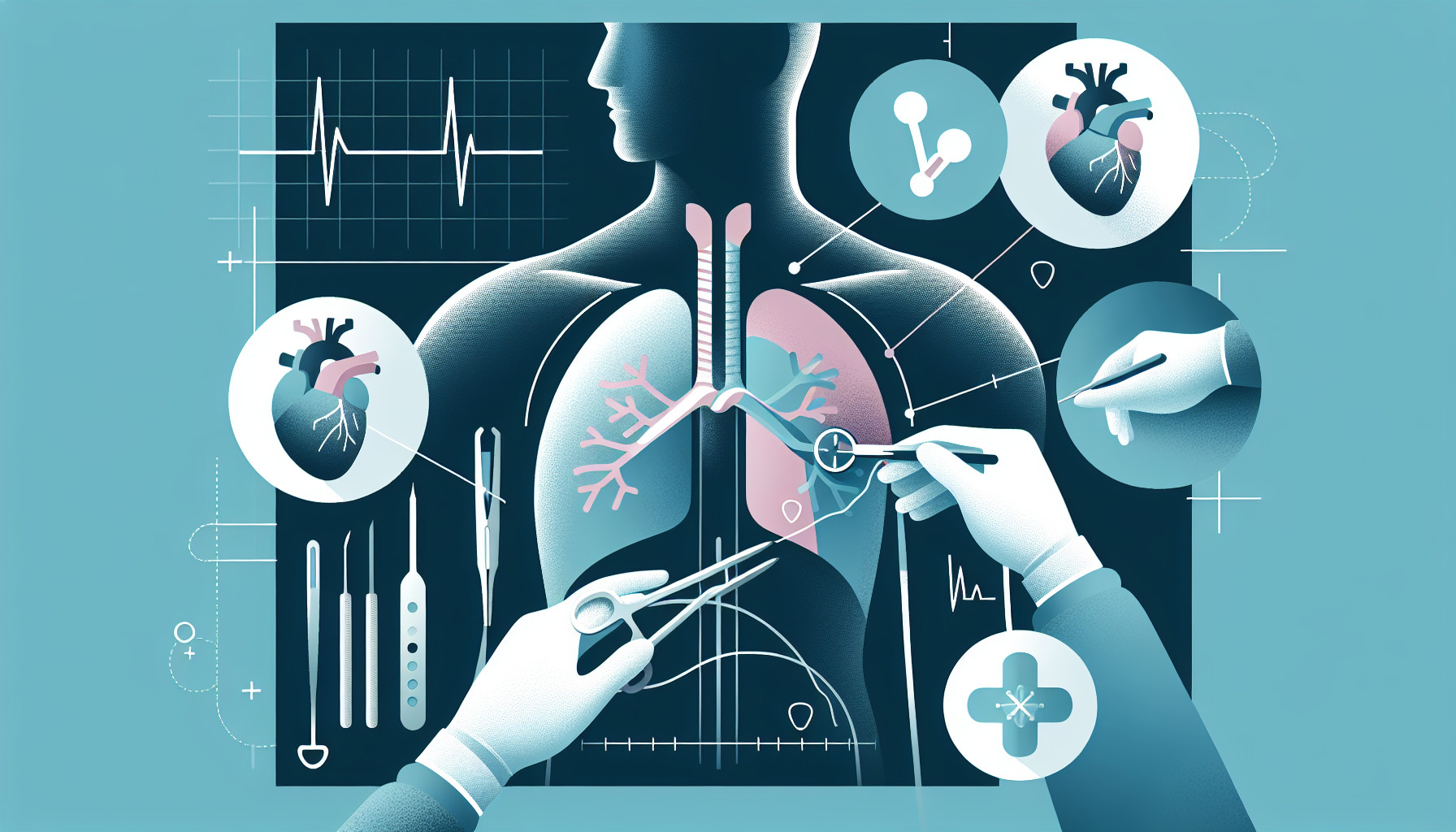Our Summary
This research paper is about a rare condition called arterial thoracic outlet syndrome, which can sometimes be related to an unusual bone structure. This condition can cause a variety of symptoms, from a mild change in the color of the arm and difficulty walking, to serious problems with blood flow that could potentially harm the limb. The paper suggests that for patients whose main issue is that the artery in the upper chest area is too wide (but without any other complications), it is enough to perform a procedure to relieve the pressure in the chest area and monitor the artery. However, for patients who have an enlarged portion of the artery (aneurysm) or a blockage that has moved to a different part of the body, more complex procedures are needed. These might include surgery to relieve the pressure and repair the artery, or a procedure to remove the blockage and reroute the blood flow.
FAQs
- What is arterial thoracic outlet syndrome and how does it present in patients?
- What is the recommended treatment for patients with subclavian artery dilation but no secondary complications?
- What surgical procedures are required for patients with subclavian artery aneurysms or distal embolization?
Doctor’s Tip
A doctor might tell a patient undergoing thoracic outlet syndrome surgery to expect some pain and discomfort after the procedure, but that this is normal and can be managed with pain medication. They may also advise the patient to follow post-operative care instructions carefully, including keeping the incision site clean and dry, avoiding heavy lifting or strenuous activities, and attending follow-up appointments to monitor healing progress. It’s important for the patient to communicate any concerns or unusual symptoms to their healthcare provider promptly.
Suitable For
Patients with arterial thoracic outlet syndrome, particularly those with subclavian artery dilation, aneurysms, or distal embolization, are typically recommended for thoracic outlet syndrome surgery. Patients may present with symptoms ranging from mild arm discoloration and claudication to severe limb-threatening ischemia. Surgical intervention may include decompression with reconstruction or thromboembolectomy and distal bypass, depending on the severity of the condition. Patients with bony anomalies such as cervical ribs may also be candidates for surgery to relieve compression on the subclavian artery.
Timeline
Before surgery:
- Patient may experience symptoms such as arm pain, numbness, weakness, and discoloration
- Patient may undergo imaging tests such as MRI or ultrasound to diagnose the condition
- Patient may try conservative treatments such as physical therapy or medication to manage symptoms
After surgery:
- Patient undergoes thoracic outlet decompression surgery to relieve pressure on the nerves and blood vessels in the thoracic outlet
- Recovery time can vary but typically involves physical therapy to regain strength and range of motion
- Patient may experience improvement in symptoms such as decreased pain and increased mobility
- Follow-up appointments and monitoring may be necessary to ensure proper healing and prevent recurrence of symptoms.
What to Ask Your Doctor
- What are the risks and benefits of thoracic outlet syndrome surgery?
- What type of surgical approach will be used for my specific case?
- How long is the recovery process and what can I expect during this time?
- Are there any potential complications or long-term effects of the surgery?
- Will I need physical therapy or other forms of rehabilitation after the surgery?
- How successful is this type of surgery in relieving symptoms and improving overall function?
- What is the likelihood of the symptoms returning after surgery?
- Are there any alternative treatments or therapies that I should consider before opting for surgery?
- How many surgeries of this type have you performed, and what is your success rate?
- What is the expected outcome for my specific case, and what are the chances of complete resolution of symptoms?
Reference
Authors: Nguyen LL, Soo Hoo AJ. Journal: Thorac Surg Clin. 2021 Feb;31(1):45-54. doi: 10.1016/j.thorsurg.2020.09.006. PMID: 33220770
